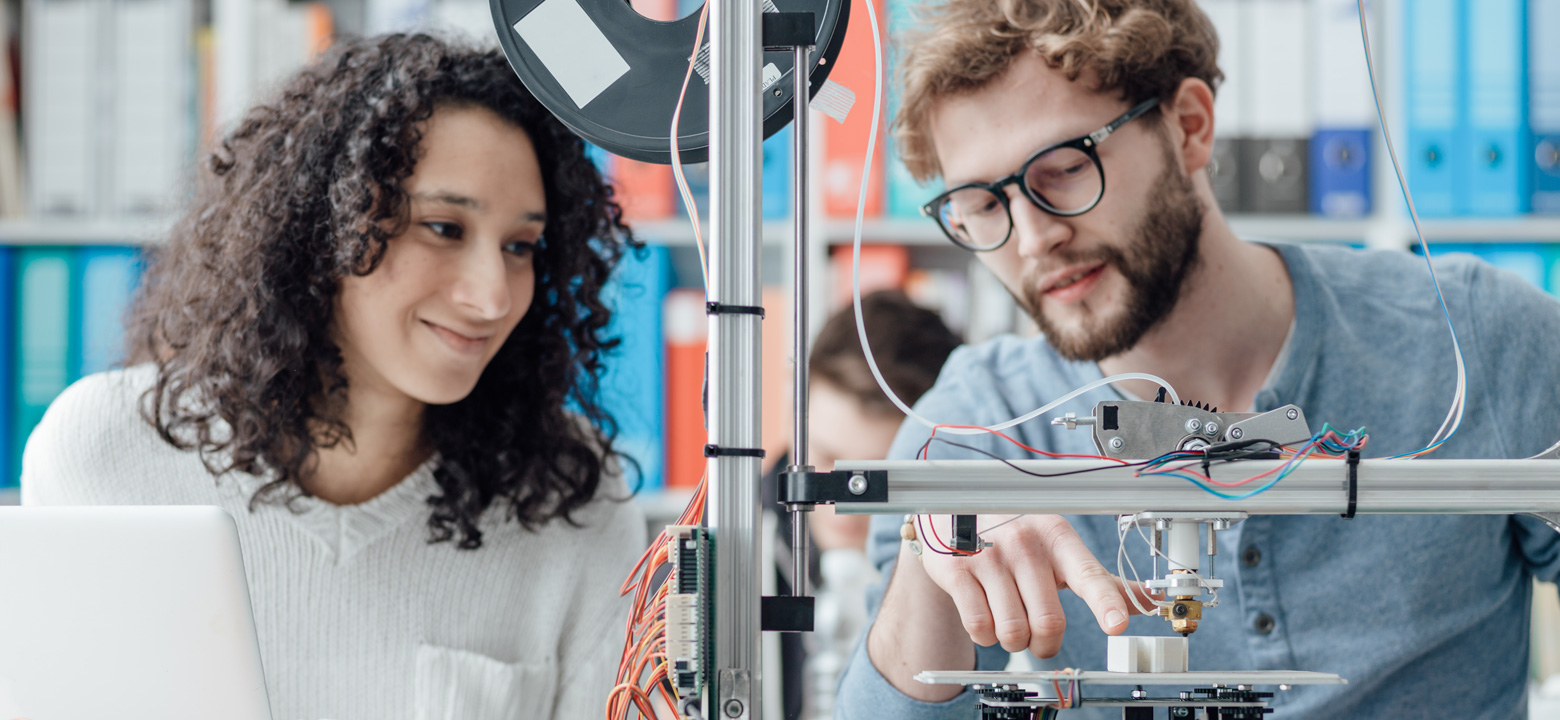
2020 has been a rough time for innovation. People generally aren't at their most creative when under stress, and, with a pandemic, a hotly contested election, and economic stressors brought about by both, there's been plenty of stress to go around. Nevertheless, some people are able to find inspiration in adversity, creating solutions to these very problems. As we get ready to enter 2021, here are five engineering innovators whose careers you should definitely follow in the new year:
Krishna Manda's inspiration came from a near tragedy. When he was riding his motorcycle, a driver made an illegal U-turn and struck him. The accident severed Manda's arm, which a team of doctors managed to reattach with titanium plates and screws. The experience was the catalyst for a truly brilliant, innovative idea: a heads-up display to keep motorcycle riders safe. Manda went on to co-found Etho, to produce helmets that provide motorcyclists with GPS information, velocity, and surrounding vehicles. This lets riders get all of the information they need about their environment to ride safely, without ever having to take their eyes off the road. As technology shifts toward autonomous vehicles and other modes of transportation, finding new ways to keep people safe will definitely take center stage. Manda's advancements could play a key role.
Caleb Johnson was recently admitted to Georgia Tech—at an astonishing 12 years of age. From the time he was born, he demonstrated a passion for learning. His mother and father placed a heavy emphasis on education in their household, and Caleb thrived in this environment. He could read by age one, and was on to sign language and fractions by two. Right now, he's most interested in aerospace engineering. He plans to get his Bachelor's and his Master's from Georgia Tech, enter an internship with Elon Musk, and complete his PhD at MIT. Though he's still a child, his trajectory is already set to give him a brilliant career in engineering.
What if you could 3D print concrete? That's what Alex Le Roux asked himself when he was studying at Baylor. He went on to create Vulcan, an enormous 3D printer capable of creating entire houses. His machine has gone on to create houses in the US, and is working on creating an entire community in Mexico. Since 3D printing a house is much faster (as little as a day) and cheaper than conventional construction methods, Le Roux and Vulcan are both entities to watch in 2021 and beyond. With a booming population and numerous changes to the way we conceptualize indoor spaces in a post-COVID world, it'll be exciting to see where his vision takes us.
One of the biggest challenges post by the novel coronavirus pandemic has been tracking its spread, identifying vectors and determining exactly what's most likely to lead to its increase. Enter the Truckee Meadows COVID Risk Meter, which uses five key indicators to create a COVID risk level, and offer suggestions for reducing the spread. With the help of College of Engineering Assistant Professor Aditya Nair, this tool is now capable of providing a risk assessment that can span as much as seven to ten days into the future. As we continue to find new ways to navigate a post-COVID world, Nair's career will definitely be worth following.
These two extraordinary ladies were recently chosen as fellows of the National Academy of Inventors, a prestigious award given to fewer than 200 people around the world this year. Lizy K. John is a professor in the Department of Electrical and Computer Engineering at The University of Texas, holder of 13 patents, author of two books on digital systems design, and co-author of over 300 scholarly articles. Van N. Truskett helped build the startup Molecular Imprints, and serves as director of technology innovation development in the Office of Technology Commercialization, as well as executive director of the Texas Innovation Center. Here, she helps students and faculty bridge the gap between innovation and commercialization, turning research into startups. Both of these women have contributed greatly to The University of Texas' reputation as an engineering innovation powerhouse, and their future projects deserve attention in 2021 and beyond.
Even in tough times, problem solvers emerge. Whether it's keeping people safe on the road, bringing a fresh perspective to aerospace engineering, creating faster, cheaper ways to safely house people and build communities, tracking and responding to the threat of COVID-19, or contributing to the next generation of innovators and engineering startups, these five people have bright futures in the engineering world. Keep an eye on them going forward, because they're going to create some great things.